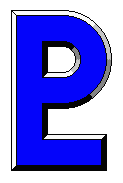









I have listed all the chords as based on the note "C". The point here is to reveal the mapping between the symbols, names, and notes. I will assume that musicians who are capable of playing my charts will have the ability to transpose this information as needed.
I sometimes use the "slash" notation for a chord with a bass note other than the root, such as "F-7/C". This means "F minor seventh with a C in the bass".
| Symbol | Name | Structure | Notes | Common Variations | |||||||||||||||||||||||
|---|---|---|---|---|---|---|---|---|---|---|---|---|---|---|---|---|---|---|---|---|---|---|---|---|---|---|---|
C or C
| Major Triad | 1, 3, 5 | C, E, G | ||||||||||||||||||||||||
C 7 7
| Major Seventh | 1, 3, 5, 7 | C, E, G, B | C 7 #11 7 #11
C7
| Dominant Seventh
| 1, 3, 5, |  7 7
C, E, G, B | 
C7 |  9, C7 #11, etc. 9, C7 #11, etc.
C+7
| Augmented Seventh
| 1, 3, #5, |  7 7
C, E, G#, B | 
C+7 #11
| C-7
| Minor Seventh
| 1, |  3, 5, 3, 5,  7 7
C, E |  , G, B , G, B
C-7 |  5 5
C |  7 7
Diminished Seventh
| 1, |  3, 3,  5, 5,
  7 (= sixth) 7 (= sixth)
C, E |  , G , G ,
B ,
B  (= A) (= A)
CALT7
| Altered Dominant
| 1, 3, #5, |  7, 7,  9,
#9, #11 9,
#9, #11
C, E, G#, B |  , D , D ,
D#, F# ,
D#, F#
|
In making the audio versions of these charts, I actually composed drum parts, which are fed from the computer into the synthesizer. If these parts were printed out, they would be unplayable. However, they are truly lousy drum parts. Any halfway decent drummer should be able to make up a much better part.
In my mind, the drum part should not be the same from performance to performance, even in the ensembles, but rather almost totally improvised. In order for the drummer to have this freedom, I write as little as I can, specifically.
Of course, there are exceptions. In Shorty, I wanted the drums to stop in certain places, so I wrote the word "rest" above the musical rest, to distinguish these spots from ordinary rests on the drum part, where the rest indicates that other instruments are not playing. Typically, a rest on one of my drum parts means that the drummer should be looking to play some kind of fill.
Once in a while, I actually write specific things for the drummer to play. The most blatant example is Sent to Siberia, but there are other examples scattered through various charts.
